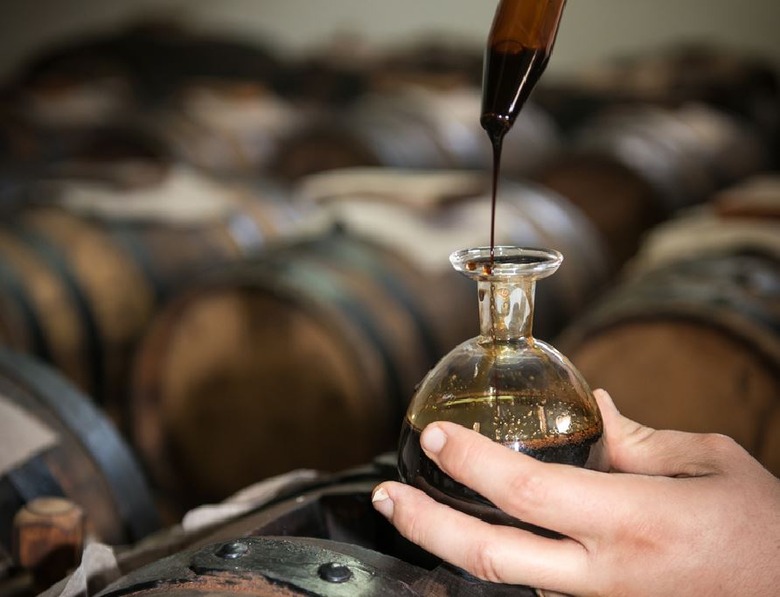Think The Balsamic Vinegar In Your Pantry Is The Real Stuff? Think Again
There are two types of balsamic vinegar in this world: the good stuff, and the cheap stuff. The good stuff is a precious, highly valuable condiment made through a laborious and lengthy process, and the cheap stuff — well, that's probably the only balsamic vinegar you've ever had, and it's not even the genuine article.
First, let's talk about how the stuff in your pantry that sells for $2.99 a bottle at the supermarket is made. These should more accurately be called balsamic-style vinegars or imitation balsamic vinegar, because they bear little to no resemblance to the real stuff. In reality, it's just wine vinegar, white vinegar, or cider vinegar, with colorings and flavorings added in order to make it taste like other imitation balsamic vinegars.
If you look at the ingredients listed on a bottle of "balsamic" vinegar and you don't see "grape must," then it's no balsamic vinegar at all. Because grape must (the name for freshly-pressed grape juice that still contains the skins, seeds, and stems) is the primary ingredient in the real stuff. In order to be labeled Aceto Balsamico Tradizionale D.O.P., it needs to be made in Reggio Emilia or Modena, Italy, and produced using the following method: First, grape must from local late-harvest grapes (usually lambrusco or trebbiano) is boiled down until it's reduced by half, left to ferment naturally for a few weeks, then matured and concentrated for a minimum of 12 years. It can't just be left in a cask like whiskey, however: During this time, the reduction is gradually transferred through a series of at least five progressively smaller casks, each usually made of a different type of wood so the resulting product picks up each complex flavor. The vinegar in the final cask is rich, dark, viscous, glossy, and concentrated, due to the evaporation that occurs over the years.
Real balsamic vinegar, made via the traditional method, has a sweet, delicate flavor that's mellow, slightly tart, and only barely acidic, with complex notes of chocolate, cherry, fig, and molasses. It's sold in wax-sealed bottles that are usually quite small, and the color of the cap denotes how old it is (usually ranging from 12 to 25 years). It can sell for up to $200 per bottle.
Should you happen to come into possession of real Aceto Balsamico Tradizionale D.O.P. — for the love of God don't cook with it (heat kills its flavor) or mix it into salad. Drizzle it over some Parmigiano-Reggiano, fresh berries, or vanilla ice cream, or use a little bit to finish dishes like risotto or grilled seafood. It's a prized delicacy, and it's something that everyone should have the opportunity to experience at some point.
